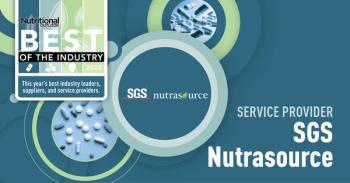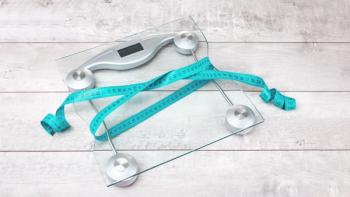
- Nutritional Outlook Vol. 19 No. 8
- Volume 19
- Issue 8
2016 Sports Nutrition Ingredient Trends
Research is pushing lesser-known ingredients to the forefront of sports nutrition.
A considerable market exists for nourishing trained and untrained athletes. According to market researcher Euromonitor International, the biggest sports nutrition markets today are in North America (currently with a $7.6 billion value), followed by Western Europe, Asia Pacific, and Eastern Europe.
Dietary supplements are still in highest demand for sports nutrition. Sophisticated ingredients that go into supplements are oftentimes more viable in a bulk powder or capsule than in complicated environments, such as bars, juices, and other food-friendly consumables. Ahead are some up-and-coming ingredients in the sports nutrition world.
HMB
The importance of leucine in sports nutrition cannot be understated. As an essential amino acid, leucine is necessary for protein synthesis, the growth and repair of muscle tissues, and numerous other biological functions. All of this gives reason for us to consume leucine frequently, which is why leucine is often incorporated into protein powders and other sports supplements. What consumers may not realize, however, is that a metabolite of leucine may be worth supplementing with, too.
Leucine’s conversion into the metabolite β-hydroxy β-methylbutyrate (HMB) is critical for completing biological functions. Unfortunately, recent studies suggest that the conversion of leucine to HMB can decline with age in both humans and other animals, potentially leading to lean mass and strength loss in adults of all ages.1,2
Already, numerous reports link HMB use to enhanced workout recovery, especially after high-intensity exercise.3,4 The ingredient may be useful for seasoned athletes pushing their training programs to higher intensities, as well as untrained sports consumers just starting an exercise program.
Research continues on HMB supplementation alone and in combination with other sports nutrients such as creatine and whey protein.4-6 Although HMB supplier Metabolic Technologies Inc. (Ames, IA) says that sports nutrition is HMB’s primary market, the company also adds that there is growing awareness around HMB for addressing sarcopenia and maintaining muscle mass later in life. For this reason, HMB should gain interest from older consumers as well.
A-GPC
Although casual consumers may not be familiar with a substance called α-glyceryl phosphoryl choline (A-GPC), its utility relates to a better-known nutrient: choline. Choline is an essential nutrient in part because it helps the body make acetylcholine, a neurotransmitter involved in muscle control and brain memory. A-GPC comes into play by increasing free choline in the bloodstream, according to recent data.7
The benefits of increasing the production of acetylcholine via A-GPC supplements appear to be both physical and mental. In recent exercise studies, A-GPC use was associated with improvements in strength and power (broadly categorized by one researcher as “explosive performance”), as well as improvements in mood and cognitive function comparable to the effects of caffeine.8-10 In response to such findings, Chemi Nutra LLC (Austin, TX), a global supplier of AlphaSize A-GPC, recently filed a patent application for replacing, displacing, and/or augmenting caffeine with AlphaSize.
A-GPC is available in powder form and, at least in the case of AlphaSize, can also be used in beverages because it’s completely water-soluble. While young men make up A-GPC’s primary purchasing group, Chemi Nutra says that “vitality” and well-being marketing are creating opportunities to appeal to older consumers who aren’t necessarily the sporting types.
Probiotics
Probiotics are gaining attention in the sports world. New study results11 shared by probiotics firm Ganeden (Cleveland) suggest that the Ganeden BC30 (Bacillus coagulans GBI-30, 6086) strain may be an effective partner to casein protein for delivering certain sports-related benefits. Compared to casein protein alone, the combination of Ganeden BC30 (1 billion CFU) and casein protein was found to be more effective at significantly reducing indices of muscle damage and soreness.
Researchers assessed the effect of the probiotic and protein combination in 29 recreationally trained men. “Ganeden BC30 with just 20 grams of protein was able to protect the muscle from damage as shown by perceptual measures and blood work, resulting in improvement in five protein utilization endpoints: decreased recovery time, decreased soreness, reduced swelling, increased power, and decreased blood kinase,” Ganeden explained. The probiotics-and-casein group was also able to maintain athletic performance in subsequent exercises; by contrast, the casein-only participants experienced a significant reduction in athletic performance following the damaging exercise bout.
In fact, research on the potential effects of probiotic supplementation on inflammation-specifically, inflammation induced by strenuous exercise-is still limited; however, probiotics supplier Probiotical S.p.A. (Novara, Italy) and its distributor partner Pharmachem Laboratories (Kearny, NJ) are adding to the information bank with the results of a new, 21-day, double-blind, randomized, placebo-controlled crossover trial highlighted at the SupplySide West trade show in October and submitted for publication.
Researchers examined the effect of supplemented probiotics on inflammation and muscle performance in 16 healthy, resistance-trained men between the ages of 21- and 29-years-old following a muscle-damaging exercise. For three weeks daily, the subjects consumed either a placebo or a probiotic blend containing 5 billion live cells of Streptococcus thermophilus FP4 and 5 billion live cells of Bifidobacterium breve BR03. The probiotics were also microencapsulated using Probiotical’s patented Microbac coating in order to protect the probiotics from damage, while also enhancing colonization. Following supplementation, subjects performed a muscle-damaging exercise involving the elbow flexors. Prior to and for several days after the start of the study, researchers measured both subsequent performance of the elbow flexors as well as levels of the inflammation marker interleukin-6 (IL-6). The subjects then underwent a 21-day washout period before switching to the alternate protocol.
The probiotic group saw several benefits from supplementation, researchers said. Anti-inflammatory benefits were observed as soon as 30 minutes post-exercise, with a “very likely anti-inflammatory effect” noted 24 hours following exercise. Compared to placebo, the probiotic also helped lessen reductions in performance during each subsequent exercise. “Further study is warranted to determine if the attenuation observed herein may result in the ability to train more frequently or at higher intensity, thereby enhancing performance to a greater extent,” the researchers said.
Alexis Collins, Director of Scientific Affairs, Pharmachem Laboratories, notes the need for continued research on probiotics in the realm of sports in general. “As with most health outcomes, the role of the gut has been largely ignored until the last decade. New research is showing encouraging data for probiotic use in athletes, but these results need to continue to be confirmed by larger clinical trials,” she says. “Specific areas of interest are support for immune health (strenuous exercise can stress the immune system), protein absorption (probiotics as nutrition optimizers), and inflammation (we know that certain probiotics can reduce inflammation, which is key to improving exercise performance).”
She concludes, “We are sure there are still probiotic sport nutrition benefits that remain undiscovered, and it will be interesting to see which strains show the greatest impact in each category.”
Amaranth Extract
In response to the growing popularity for beets in sports, DolCas Biotech LLC (Landing, NJ) just introduced an amaranth extract with similar benefits to those of beets.
Like beets, amaranth (or red spinach) is rich in nitrates, which is a big reason why some athletes consume beets for sports performance. The conversion of nitrates to usable nitrites and nitric oxide in the body has been posited to have a beneficial effect on muscle function and exercise.12
But Dolcas goes a step further with its Oxystorm amaranth extract by not only supplying nitrates in a bioavailable form13, but also guaranteeing their content. The extract is standardized for 9% nitrates and 13% potassium in every dose, which contrasts the inevitable variability that will come with buying beets and their derivatives (juices and powders) in grocery stores.
Oxystorm is free of oxalates, compounds that are present in beet products and that may be harmful if they over-accumulate in the body. Researchers completed an exercise study on the extract earlier this year and found that the ingredient’s use was associated with improved ventilatory threshold in recreationally trained athletes.14 Full results of the study will be published in the future, alongside results of a vascular phase of the same study. Oxystorm distributors include PLT Health Solutions (Morristown, NJ).
French Oak Extract
Horphag Research (Hoboken, NJ) recently shared study results15 for its new Robuvit French oak-wood (Quercus robur) extract launched in the United States this past summer. The data suggest the ingredient may improve triathlon performance, endurance, and recovery in athletes aged 30–40.
The study involved 54 amateur athletes, half of whom consumed 300 mg of Robuvit daily for two weeks. Following two weeks of triathlon training and Robuvit supplementation in the experimental group, researchers found that subjects supplementing with Robuvit experienced greater improvements in swimming and biking time than the control group, as well as a greater decrease in average running time. Overall, total triathlon time improved by -10.56% in the Robuvit group, compared to -3.41% in the control group. “The -10.56% shorter total triathlon time was considered as very good improvement, considering that for this type of athletes, being almost at the top of their form, it is difficult to improve even further without severe training,” researchers noted.
Fred Pescatore, MD, nutraceutical consultant for Horphag Research, says that Robuvit “cuts down on the chemical processes that impede your top performance,” such as oxidative stress.
“For many, the muscle soreness that can linger days afterward is what keeps them out of their gym and off their routine,” Pescatore says. “Robuvit greatly reduces the length and severity of this, empowering you to keep training and keep pushing through.”
Resveratrol
A good portion of recent resveratrol studies have focused on prospects in sports and exercise. Although not all of these studies have yielded positive outcomes16,17, plenty have. Resveratrol supplier Sabinsa (East Windsor, NJ) is especially delighted with recent study outcomes relating to improved mitochondrial performance in response to low-intensity exercise, and cerebral blood flow increases with resveratrol and piperine.18,19
In the 16-subject, low-intensity-exercise study18, healthy young adults with a mean age of 20 consumed either a placebo or 500 mg of Sabinsa’s resveratrol plus 10 mg of its BioPerine piperine for four weeks. All participants completed submaximal endurance training of the wrist flexor muscles of the nondominant arm per week. Based on near-infrared spectroscopy to assess skeletal muscle mitochondrial capacity, researchers found that participants in the resveratrol-plus-BioPerine group experienced a 40% increase in mitochondrial capacity of the trained arm at the study’s conclusion compared to baseline. The placebo group, on the other hand, experienced an increase of 10%-a significant difference between the two groups.
The study authors also noted that much of the previous research on resveratrol has been conducted on high-intensity exercise, but this study is unique in assessing the effects of resveratrol supplementation on low-intensity exercise, which could help the ingredient draw in people of all athletic levels.
Ashwagandha
The root of the Ayurvedic plant ashwagandha is receiving increased scientific interest. In just the last two years, studies have associated consumption of ashwagandha supplements with improvements in muscle strength and recovery, cardiorespiratory endurance, and, most recently, chronic stress.20,21 These results complement previously available data suggesting that ashwagandha can have positive influences on both mind and body.
Much of the existing ashwagandha research has been conducted with KSM-66, a standardized ashwagandha extract from supplier Ixoreal Biomed Inc. (Los Angeles). The company says that several more clinical studies are in the works investigating similar health factors but in different populations.
Ashwagandha is sold as a standalone dietary supplement, but it’s also incorporated into broader sports nutrition formulas, too, such as post-workout ones. Its neutral flavor allows for a wide range of uses in dietary supplements, functional foods, and beverages.
Botanicals for Sport
Highly standardized products aside, plenty of simple plant ingredients have shown potential in sports and exercise settings. Tart cherry, in particular, continues to make news because of its demonstrated potential to reduce exercise recovery time, muscle damage, and oxidative stress after exercise.22-24 The ingredient is available seasonally in supermarkets, but Anderson Global Group LLC (Irvine, CA) makes it available year-round with its research-backed CherryPure powder and juice concentrates.
Other domestic fruits offer some exercise benefit. Draco Natural Products (San Jose, CA) says blackberry and apple are particularly rich in epicatechin. In a recent human study, epicatechin demonstrated potential to inhibit myostatin (a compound that inhibits muscle growth) and increase muscle strength.25 Also, Draco says, in an endurance test, grape juice consumption was linked to increased time to exhaustion in runners.26
For more exotic approaches, Ecuadorian Rainforest suggests manufacturers consider astragalus among other foreign botanicals such as green coffee bean. This Asian root is believed to support the immune system and be useful against fatigue, as demonstrated in at least two independent studies.27,28
Also read:
References:
- “Age associated decline in the conversion of leucine to β-hydroxy β-methylbutyrate in rats,” Experimental Gerontology, vol. 80 (July 2016): 6-11
- Giron M et al., “Conversion of leucine to β-hydroxy-β-methylbutyrate by α-keto isocaproate dioxygenase is required for a potent stimulation of protein synthesis in L6 rat myotubes,” Journal of Cachexia, Sarcopenia, and Muscle, vol. 7, no. 1 (March 2016): 68-78
- Wilson JM et al., “International Society of Sports Nutrition position stand: beta-hydroxy-beta-methylbutyrate (HMB),” Journal of the International Society of Sports Nutrition, vol. 10, no. 1 (February 2, 2013): 6
- Hoffman JR et al., “β-hydroxy β-methylbutyrate attenuates cytokine response during sustained military training,” Nutrition Research, vol. 36, no. 6 (June 2016): 553-563
- Jówko E et al., “Creatine and beta-hydroxy-beta-methylbutyrate (HMB) additively increase lean body mass and muscle strength during a weight-training program,” Nutrition, vol. 17, no. 7-8 (July-August 2001): 558-566
- M Shirato et al., “Effects of combined β-hydroxy β-methylbutyrate (HMB) and whey protein ingestion on symptoms of eccentric exercise-induced muscle damage,” Journal of the International Society of Sports Nutrition. Published online February 29, 2016.
- T Kawamura et al., “Glycerophosphocholine enhances growth hormone secretion and fat oxidation in young adults,” Nutrition, vol. 28, no. 11-12 (November-December 2012): 1122-1126
- Bellar D et al., “The effect of 6 days of alpha glycerylphosphorylcholine on isometric strength,” Journal of the International Society of Sports Nutrition. Published online November 17, 2015.
- Parker AG et al., “The effects of alpha-glycerylphosphorylcholine, caffeine, or placebo on markers of mood, cognitive function, power, speed, and agility,” Journal of the International Society of Sports Nutrition, vol. 12, s. 1 (2015): P41
- Bellar D et al., “Alpha glycerylphosphocholine: Emerging evidence for ergogenic potential.” Poster presented at the Sports Performance Conference in June 2016.
- Jäger R et al., “Probiotic Bacillus coagulans GBI-30, 6086 reduces exercise-induced muscle damage and increases recovery,” PeerJ. Published online July 21, 2016.
- Jones AM, “Dietary nitrate supplementation and exercise performance,” Sports Medicine, vol. 44, s. 1 (2014): 35-45
- Subramanian D et al., “Pharmacokinetic study of amaranth extract in healthy humans: a randomized trial,” Nutrition, vol. 32, no. 7-8 (July-August 2016): 748-753
- Martin JS et al., “The effects of a novel red spinach extract on graded exercise testing performance.” Poster at the American College of Sport medicine Annual Meeting, www.acsmannualmeeting.org. Accessed August 28, 2016.
- Vinciguerra MG et al., “Robuvit and endurance in triathalon: improvements in training performance, recovery and oxidative stress,” Minerva Cardioangiologica, vol. 63, no. 5 (October 2015): 403–409
- Buford TW et al., “Resveratrol as a supplement to exercise training: friend or foe?” The Journal of Physiology, vol. 592, part 3 (February 1, 2014): 551-552
- Laupheimer MW et al., “Resveratrol exerts no effect on inflammatory response and delayed onset muscle soreness after a marathon in male athletes: a randomized, double-blind, placebo-controlled pilot feasibility study,” Translational Medicine @ UniSa, vol. 10 (September-December 2014): 38-42
- Polley KR et al., “Influence of exercise training with resveratrol supplementation on skeletal muscle mitochondrial capacity,” Applied Physiology, Nutrition and Metabolism, vol. 41, no. 1 (January 2016): 26-32
- Wightman EL et al., “Effects of resveratrol alone or in combination with piperine on cerebral blood flow parameters and cognitive performance in human subjects: a randomized, double-blind, placebo-controlled, cross-over investigation,” British Journal of Nutrition, vol. 112, no. 2 (July 2014): 203-213
- Choudhary B et al., “Efficacy of ashwagandha (Withania somnifera [L.] Dunal) in improving cardiorespiratory endurance in healthy athletic adults,” AYU, vol. 36, no. 1 (January- March 2015): 63-68
- Wankhede S et al., “Examining the effect of Withania somnifera supplementation on muscle strength and recovery: a randomized controlled trial,” Journal of the International Society of Sports Nutrition. Published online November 25, 2015.
- Lever K et al., “Effects of powdered Montmorency tart cherry supplementation on an acute bout of intense lower body strength exercise in resistance trained males,” Journal of the International Society of Sports Nutrition, vol. 12 (November 2015): 41
- Bell PG et al., “The effects of Montmorency tart cherry concentrate supplementation on recovery following prolonged, intermittent exercise,” Nutrients, vol. 8, no. 7 (July 2016): 441
- Keane KM et al., “Effects of Montmorency tart cherry (Prunus cerasus L.) consumption on vascular function in men with hypertension,” American Journal of Clinical Nutrition, vol. 103, no. 6 (June 2016): 1531-1539
- Gutierrez-Salmean G et al., “Effects of (-)-epicatechin on molecular modulators of skeletal muscle growth and differentiation,” Journal of Nutritional Biochemistry, vol. 25, no. 1 (January 2014): 91-94
- Toscano LT et al., “Potential ergogenic activity of grape juice in runners,” Applied Physiology, Nutrition, and Metabolism, vol. 40, no. 9 (September 2015): 899-906
- Chen KT et al., “Reducing fatigue of athletes following oral administration of huangqi jianzhong tang,” Acta Pharmacologica Sinica, vol. 23, no. 8 (August 2002): 757-761
- Yeh TS et al., “Astragalus membranaceus improves exercise performance and ameliorates exercise-induced fatigue in trained mice,” Molecules, vol. 19, no. 3 (March 2014): 2793-2807
Articles in this issue
about 9 years ago
Capsule Filling: Quality by Designabout 9 years ago
Quiz: Find the Adulterantabout 9 years ago
Healthy Snack Trends: Paleo, Gluten-Free, and Moreabout 9 years ago
From the Editor: Industry Taking the Right Roadabout 9 years ago
Dietary Supplements and Inflammationabout 9 years ago
Alternative Joint-Health Ingredients Are on the Riseabout 9 years ago
What Google Trends Says about Branched-Chain Amino Acidsabout 9 years ago
Puffed Ancient Grains Are the New Trendabout 9 years ago
What Happens When Your Certificate of Analysis Is a Fake?Newsletter
From ingredient science to consumer trends, get the intel you need to stay competitive in the nutrition space—subscribe now to Nutritional Outlook.





